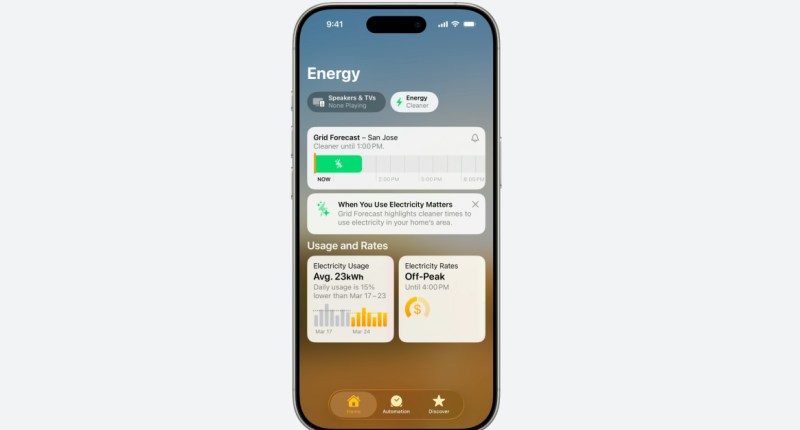Share this @internewscast.com
Apple’s smart home didn’t receive any mention during the WWDC keynote, but there are new updates related to energy management in the Home app to look forward to.
In a recent video shared on the Apple developer site, the company introduced the EnergyKit framework. This innovation enables developers to incorporate energy data from Apple Home in iOS 26 and iPadOS 26, allowing devices to manage electricity usage, emphasizing more eco-friendly or cost-effective energy sources. For instance, a thermostat could decrease its power use during peak price periods, and an electric vehicle could adopt a charging schedule that aligns with price forecasts to help cut costs.
According to Apple’s documentation, EnergyKit is initially intended for use with electric vehicle chargers and smart thermostat applications. Currently, a number of individual products offer these capabilities. Ecobee and Google Nest thermostats can adapt their energy consumption based on clean energy availability and pricing rates, as well as participate in demand response programs. Additionally, most EV charger applications are equipped to set schedules using energy data.
While EnergyKit is designed to bring data securely from Apple Home into the manufacturer’s app, you can see the potential here to one day manage all of these devices and functions from within Apple Home. It could be laying the groundwork for Apple Home to eventually become a home energy management system (HEMS): a system that can monitor, control, and optimize your energy usage.
We’re already seeing this implemented in smart home platforms like Samsung SmartThings with its AI Energy Mode, Homey (owned by LG), and others. Apple has a lot of catching up to do, as its platform doesn’t currently support energy monitoring from connected devices.
This could lay the groundwork for Apple Home to eventually become a home energy management system
This is likely why EnergyKit is focused on allowing developers to integrate the data from Apple Home into their own apps, as Apple Home doesn’t support EV chargers or energy monitoring of thermostats. However, with Apple’s deep involvement in the Matter smart home standard, it’s possible that support for these devices might come to Apple Home.
Matter recently added support for most major appliance types as well as energy-intensive devices like heat pumps and electric water heaters, all of which could now more easily be integrated into Apple Home via Matter. The standard also supports battery energy storage systems and solar power devices such as inverters, panels, and hybrid solar / battery systems. When you connect the dots, it seems that this could be a natural next step for Apple’s smart home ambitions.






